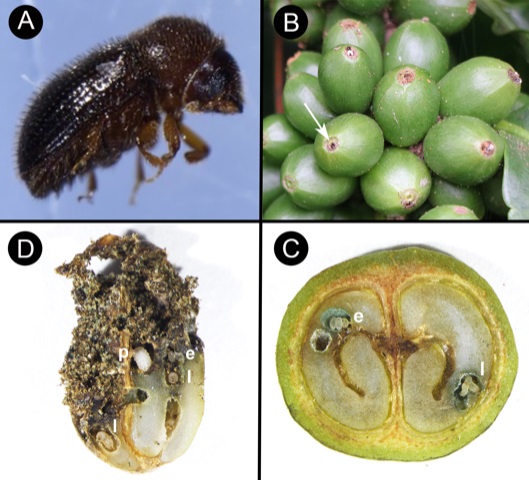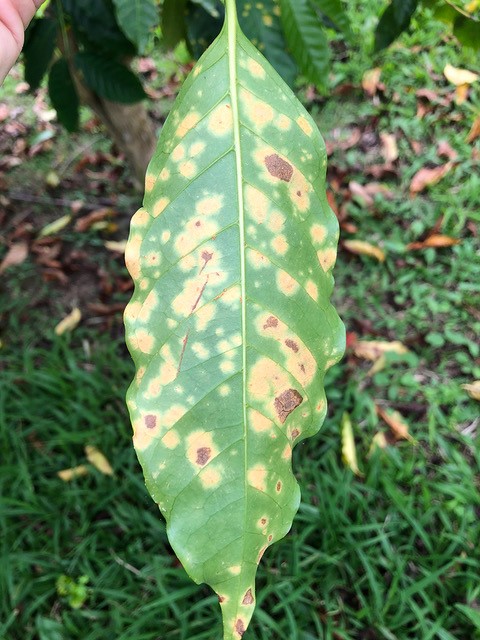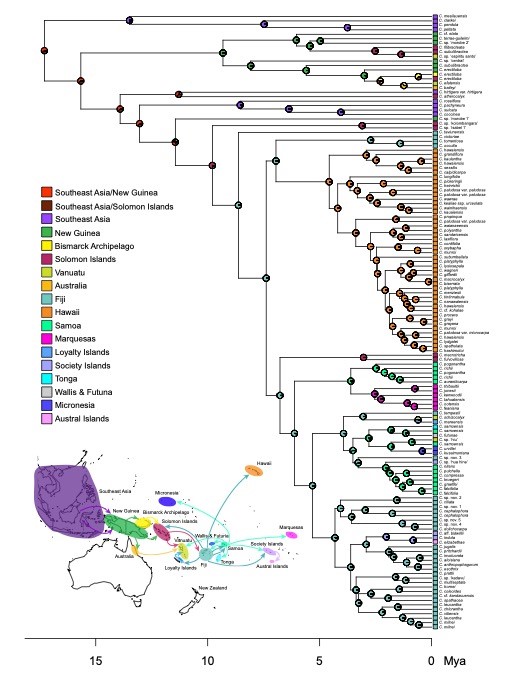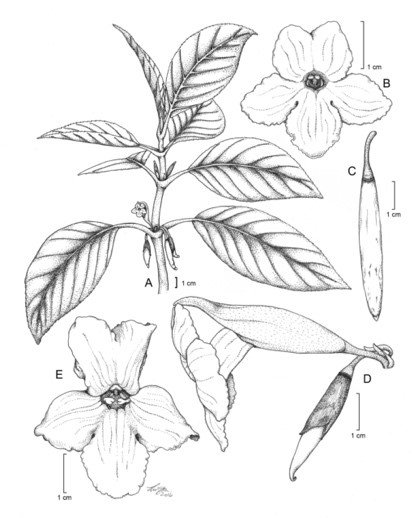Research Biologist
|
Contact Information USDA-ARS Daniel K. Inouye U.S. Pacific Basin Agricultural Research Center |
 |
Publications
Via ARIS
Via ResearchGate
Via Google Scholar
Education
Ph.D. in Botany, Claremont Graduate University, Claremont, CA, December 2016
M.Sc. in Tropical Conservation Biology and Environmental Science, University of Hawaii at Hilo, May 2011
B.A. in Ecology, Evolution, and Conservation Biology, University of Hawaii at Hilo, May 2008
Research Positions
Research Biologist, December 2020 – Present, United States Department of Agriculture – Agricultural Research Service, Daniel K. Inouye US Pacific Basin Agricultural Research Center, Hilo, HI
Postdoctoral Researcher, February 2017 – November 2020, Oak Ridge Institute for Science and Education, United States Department of Agriculture – Agricultural Research Service, Daniel K. Inouye US Pacific Basin Agricultural Research Center, Hilo, HI
Research Projects and Accomplishments
Area-wide Integrated Pest Management for Coffee Berry Borer

Coffee berry borer (CBB, Hypothenemus hampei Ferrari) is the most damaging insect pest of coffee worldwide, causing more than $500 M in annual losses. CBB was first detected in Hawaii in 2010, and quickly spread to all coffee-producing regions in the islands. In 2016, we initiated area-wide monitoring of this pest at 14 commercial coffee farms on Hawaii Island, gathering information on coffee plant phenology, CBB flight activity, berry infestation, mortality by Beauveria bassiana, management practices and weather. Through this research we have accomplished a number of objectives to improve IPM for this global pest of coffee, including: 1) producing a scientific monitoring protocol for CBB that can be used by researchers worldwide to standardize data collection and enhance our ability to conduct comparative studies, 2) uncovering the role of feral, unmanaged and poorly managed coffee in the cycle of CBB infestation, 3) describing post-harvest reservoirs of CBB that result in infestation of the new season’s crop, 4) characterizing the seasonal phenology and influence of weather variables on CBB flight activity, 5) correlating CBB infestation with coffee plant phenology and providing insight into successful combinations of management practices, 6) describing CBB development times under natural field conditions, and 7) testing novel and sustainable methods of CBB control (e.g., exclusion netting, ground cover crops).

Coffee Leaf Rust Monitoring
Detecte d in late 2020 in Hawaii, Coffee Leaf Rust (CLR, Hemileia vastatrix) is a fungal pathogen that causes reduced photosynthesis and leaf drop, followed by subsequent losses in coffee production. CLR is described as the most devastating disease of coffee worldwide, resulting in 70% crop loss in some countries. In December 2020, we initiated CLR surveys across Hawaii Island to track the spread of the disease across the region, while collecting vital information on disease incidence and severity, as well as weather and farm management. This early response will provide critical information on disease biology and the factors that promote its dispersal and survival across a highly variable landscape. Together, this data will serve as the foundation for the development of an IPM strategy for this disease.
d in late 2020 in Hawaii, Coffee Leaf Rust (CLR, Hemileia vastatrix) is a fungal pathogen that causes reduced photosynthesis and leaf drop, followed by subsequent losses in coffee production. CLR is described as the most devastating disease of coffee worldwide, resulting in 70% crop loss in some countries. In December 2020, we initiated CLR surveys across Hawaii Island to track the spread of the disease across the region, while collecting vital information on disease incidence and severity, as well as weather and farm management. This early response will provide critical information on disease biology and the factors that promote its dispersal and survival across a highly variable landscape. Together, this data will serve as the foundation for the development of an IPM strategy for this disease.
Evolution, Taxonomy, and Conservation of Pacific Island Plants
 Much of my earlier research has been centered on questions regarding the patterns and processes of speciation. Species are the fundamental units of biodiversity, yet we know relatively little about the processes that generate the amazing diversity of organisms across the planet. The oceanic islands of the Pacific provide an ideal setting for testing many biogeographic and evolutionary hypotheses regarding species diversification and were thus the focus of my graduate studies. Specifically, I sought to understand the mechanisms involved in the dispersal and diversification of plant species within and across island archipelagos. My methods combined detailed observations and experiments in field and greenhouse settings, molecular laboratory work to generate DNA sequence data and phylogenetic trees, tissue sectioning and scanning electron microscopy to compare anatomy and micromorphology, taxonomic study of preserved and field-collected specimens, and statistical models to determine the likelihood of evolutionary events. I have worked with several ecologically important Pacific plant genera in this capacity, incl
Much of my earlier research has been centered on questions regarding the patterns and processes of speciation. Species are the fundamental units of biodiversity, yet we know relatively little about the processes that generate the amazing diversity of organisms across the planet. The oceanic islands of the Pacific provide an ideal setting for testing many biogeographic and evolutionary hypotheses regarding species diversification and were thus the focus of my graduate studies. Specifically, I sought to understand the mechanisms involved in the dispersal and diversification of plant species within and across island archipelagos. My methods combined detailed observations and experiments in field and greenhouse settings, molecular laboratory work to generate DNA sequence data and phylogenetic trees, tissue sectioning and scanning electron microscopy to compare anatomy and micromorphology, taxonomic study of preserved and field-collected specimens, and statistical models to determine the likelihood of evolutionary events. I have worked with several ecologically important Pacific plant genera in this capacity, incl uding Metrosideros (Myrtaceae), Cyrtandra (Gesneriaceae), Clermontia (Campanulaceae) and Bidens (Asteraceae). Importantly, many species within these genera are extinct, endangered, or threatened, highlighting the importance of taxonomic and phylogenetic work to preserve these rare taxa. Through my extensive research on Cyrtandra I described five species new to science, all of which are considered endangered or critically endangered.
uding Metrosideros (Myrtaceae), Cyrtandra (Gesneriaceae), Clermontia (Campanulaceae) and Bidens (Asteraceae). Importantly, many species within these genera are extinct, endangered, or threatened, highlighting the importance of taxonomic and phylogenetic work to preserve these rare taxa. Through my extensive research on Cyrtandra I described five species new to science, all of which are considered endangered or critically endangered.
Service, Leadership and Participation in Professional Activities
-
Reviewer Board Member. Insects. 2020 – Present.
-
Professional Member. Entomological Society of America. 2017 – Present.
-
Peer Review Referee. Journal of Economic Entomology, Journal of Applied Entomology, Insects, Biological Control, Crop Protection, Plants, Sustainability, Mathematical Biosciences, Neotropical Entomology, Entomologia Experimentalis et Applicata, American Journal of Botany, Edinburgh Journal of Botany, Systematic Botany, Journal of Biogeography, New Phytologist, European Journal of Taxonomy.
-
Organizer & Invited Participant. Hawaii Coffee Pest Management Strategic Plan Workshop. 2020. PBARC, Hilo, HI.
-
Invited Participant. Puerto Rico Coffee and Tea Pest Management Strategic Plan Workshop. 2019. University of Puerto Rico, San Juan, Puerto Rico.
-
Judge. Hawaii District Science Fair. 2018. Hilo, HI.
-
Invited Participant. CBB Biocontrol Workshop. 2017. Kauaʻi, HI.
-
Taxonomic advisor. National Tropical Botanical Garden’s “Flora of Samoa”. 2017. Kauaʻi, HI.
-
Student Chair. Claremont Graduate University Botany Program. 2013–2014. Claremont, CA.
Honors, Awards, Achievements and Recognition
- Best Research in Progress: 2015 California Botanic Society Graduate Symposium. Claremont, CA
- Best Contributed Paper in Tropical Biology: 2013 Botanical Society of America Annual Conference. New Orleans, LA.
- First Place Graduate Presentation: 2011 TCBES Annual Symposium. UH Hilo.
- Certificate of Recognition: 2008 Outstanding Senior Biology Major. UH Hilo.
Grant and Awards
- Specialty Crops Research Initiative Grant. Coffee Leaf Rust in Hawaii. 2021.
- USDA National Plant Disease Recovery System Grant. Coffee Leaf Rust. 2021.
- Specialty Crops Block Grant. Coffee Leaf Rust. 2021.
- The Gesneriad Society Elvin McDonald Fund. 2017, 2015.
- American Philosophical Society Lewis & Clark Fund for Exploration & Field Research. 2015.
- Garden Club of America Award in Tropical Botany. 2015.
- Society of Systematic Biologists Graduate Student Research Award. 2014.
- American Society of Plant Taxonomists Graduate Student Research Grant. 2014.
- Claremont Graduate University Graduate Student Council Travel Award. 2014.
- Claremont Graduate University Graduate Student Council Materials Award. 2014.
- Sigma Xi Grants-in-Aid of Research. 2013, 2010.
- The Gesneriad Society Nelly D. Sleeth Scholarship Endowment Fund. 2013.
- Summer Institute in Statistical Genetics Tuition and Travel Grant. 2013.
- California Native Plant Society Rare Plant Publication Grant. 2013.
- Rancho Santa Ana Botanic Garden Research Grant. 2013, 2014, 2015.
- National Tropical Botanical Garden McBryde Travel Grant. 2011.
- Arthur & Beatrice Harris Endowment for Graduate Students. 2010.
- UH Hilo’s NSF GK-12 PRISM Program Research Grant. 2010.
- University of Hawaii Education Opportunity Scholarship. 2010, 2011.
- American Association of University Women Academic Scholarship. 2009.
- USA Funds Access to Education Academic Scholarship. 2009.
- UH Hilo College of Arts & Sciences Academic Award. 2005, 2006, 2007.
